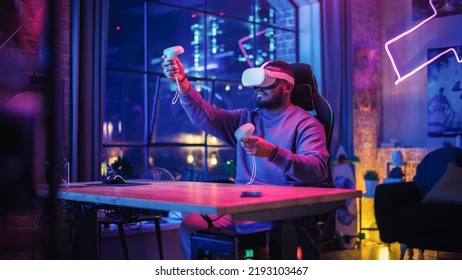
Absolutely! Here’s a full article-style write-up for:
♿ Designing Accessible Game Worlds for Players with Disabilities
As the gaming industry evolves, so does our understanding of who plays games—and it turns out, everyone does. Players of all abilities deserve to experience immersive, engaging worlds without unnecessary barriers. That’s why designing accessible game environments is no longer optional—it’s essential.
Accessibility in game worlds isn’t just about UI toggles or subtitles; it’s about crafting experiences where all players can explore, interact, and enjoy with dignity and ease.
Let’s explore how developers can design game worlds that are not only beautiful and functional—but inclusive by design.
🎮 Why Accessibility Matters in World Design
According to the WHO, over 1 billion people worldwide live with some form of disability. That includes:
- Vision impairments (color blindness, low vision, blindness)
- Hearing impairments (deafness, hard of hearing)
- Motor disabilities (limited mobility, use of one hand, tremors)
- Cognitive or neurodivergent conditions (ADHD, dyslexia, autism)
Inaccessible world design—from unclear pathways to overly complex interactions—can make players feel excluded or frustrated.
Accessible world design, on the other hand:
- Expands your audience
- Builds community trust
- Improves usability for everyone
- Makes your game future-forward and human-centered
🧠 Core Principles of Accessible Game Worlds
1. 🗺️ Clarity in Navigation & Layout
Game environments should be easy to read and understand, even for players with cognitive or visual impairments.
✅ Use clear landmarks and distinguishable paths
✅ Keep level layouts consistent and logically structured
✅ Avoid complex mazes unless optional
✅ Provide optional navigation aids (e.g. directional markers, trails, or compasses)
✅ Support slow exploration without time pressure
🎮 Example: The Last of Us Part II includes a navigation assist mode that guides players toward objectives with the press of a button.
2. 🎨 Color Accessibility
Color shouldn’t be the only way players receive information.
✅ Avoid red/green-only indicators
✅ Use high-contrast UI and environment elements
✅ Include colorblind-friendly modes (for protanopia, deuteranopia, tritanopia)
✅ Pair color with shapes, symbols, or text
🎮 Example: Overwatch includes extensive colorblind filters and allows players to customize UI colors for enemy teams and allies.
3. 🔈 Sound Alternatives
Deaf and hard-of-hearing players need visual or haptic alternatives to important audio cues.
✅ Subtitles for dialogue with speaker tags
✅ Visual indicators for sound-based events (e.g. enemy approaching)
✅ Vibration/haptic feedback for key sounds
✅ Optional sound visualization modes
🎮 Example: Fortnite offers a visual sound effects option that shows directional indicators for footsteps, gunfire, and chests.
4. 🎮 Motor Accessibility & Interaction Simplicity
Design worlds that don’t demand fast reaction times or complex input combos unless absolutely necessary.
✅ Include auto-interact or toggle options instead of holds
✅ Offer aim assist, auto-pickups, and lock-on features
✅ Provide remappable controls and one-handed layouts
✅ Allow pausing or slowing time in high-pressure environments
🎮 Example: Celeste includes Assist Mode with options like slow motion, infinite stamina, and invincibility—without punishing the player.
5. 💬 Cognitive & Neurodivergent Inclusion
Worlds should be understandable, non-overwhelming, and forgiving.
✅ Reduce clutter and overstimulation (flashing lights, too many objectives)
✅ Offer simplified HUD options
✅ Give clear, repeated instructions and flexible quest tracking
✅ Allow players to set their own pace
✅ Use visual storytelling to reinforce verbal/written instructions
🎮 Example: Animal Crossing: New Horizons has a calm, non-linear world that’s welcoming for players with autism, ADHD, or anxiety.
🔧 Implementing Accessible Features in World Design
| Feature | Helps With | Implementation Idea |
|---|---|---|
| High-contrast mode | Vision impairments | Bold outlines, darker backgrounds, simplified shaders |
| Landmarking systems | Cognitive load | Use unique architecture, color zones, or map pins |
| Adjustable difficulty & enemy behavior | Motor disabilities | Slower enemies, toggle for auto-target or invincibility |
| Flexible UI placement & scaling | Low vision or neurodivergence | Let players move/resize menus, minimize clutter |
| Non-verbal communication cues | Hearing impairments | Emotes, glowing objects, symbol-based systems |
| Predictable environmental logic | Cognitive challenges | Teach rules and stick to them—consistency is clarity |
🧭 Inspiration: Games That Set the Bar
| Game | Accessibility Highlights |
|---|---|
| The Last of Us Part II | 60+ accessibility settings including navigation assist, text-to-speech, and combat simplification |
| Forza Horizon 5 | Sign language interpretation, screen reader support, subtitle scaling |
| Celeste | Assist Mode allows full customization of gameplay difficulty |
| Grounded | Arachnophobia mode that visually alters spiders for players with phobias |
| Sea of Thieves | Text-to-speech and speech-to-text for multiplayer communication |
👥 Co-Creating with the Disabled Gaming Community
Want to get it right? Work directly with disabled players. They know what works—and what doesn’t.
- Host accessible playtests
- Form advisory panels
- Engage with accessibility-focused streamers and organizations
- Read player stories and case studies
- Be transparent about what’s planned and what’s possible
🎯 Tip: Follow organizations like AbleGamers, Can I Play That?, and Xbox’s Gaming Accessibility Guidelines
🌱 Final Thought
Designing accessible game worlds isn’t about adding a feature here or a toggle there—it’s about rethinking your game through the lens of inclusion. It’s about creating spaces where players of every ability can explore, connect, and belong.
Accessible design doesn’t limit creativity. It expands it.
And when done right, it makes the game better—for everyone.
Need help designing inclusive worlds, playtesting with accessibility in mind, or integrating universal design principles into your project? Let’s make your world one where everyone gets to play. 🎮♿🌍